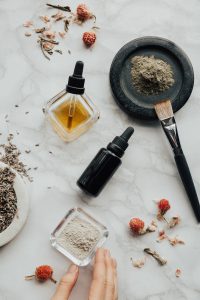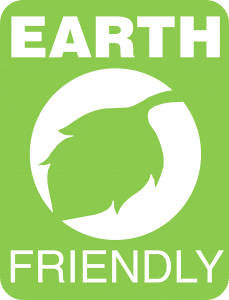What do you look for when you’re shopping for food, beauty products, and cleaning supplies? Are the labels “clean,” “green,” or “natural” important to you, and are you willing to pay more for products with those labels? If so, you’re not alone: sales of products labeled with these descriptions have been soaring over the last decade. In fact, 50% of growth in sales of consumer packaged goods came from products marketed in this way. Not only that, but in a recent study, 86% of millennials and 59% of baby boomers said they would pay more for products with organic/natural ingredients. The percentage is 80% and 61% respectively for “green” or environmentally sustainable products. But what does it really mean when a company claims that their product is “clean,” “green,” or “natural”? Are you getting what you’re paying for, or are you being “greenwashed”?
“Natural”
Let’s start with this very common word. Why does it seem like it’s on every label these days? Because of all three of these terms, “natural” is probably the most meaningless. The word “natural” as it pertains to things like packaged food, skincare, or beauty products isn’t regulated – at all. The FDA pretty much stays out of making rules for labeling things as “natural” but it does offer guidelines in some cases.
- For food: The FDA considers the term “natural” to mean that nothing artificial or synthetic, or anything that wouldn’t normally be added to food, is found in the ingredients of a product. But they don’t address food production or processing methods, and their definition doesn’t weigh in on any nutritional or (other) health benefit. The USDA also has guidelines for the term “natural,” but their definition ends up being pretty toothless. They define “natural” as “a product containing no artificial ingredient or added color” that “is only minimally processed,” meaning it’s “processed in a manner that does not fundamentally alter the product.” That means animals raised with hormones and antibiotics can still fall under the “natural” category, as can things like Cheetos and lemon-flavored Oreos.
- For beauty, skincare, etc products: For cosmetics, it’s basically the wild west when it comes to defining “natural.” The USDA has no regulations in place and the FDA website states that the “FDA has not defined the term ‘natural’ and has not established a regulatory definition for this term in cosmetic labeling.” According to Perry Romanowski, president of the Society of Cosmetic Chemists, “Really, the term ‘natural’ could refer to almost any product. However, the [Federal Trade Commission] has said that if companies are going to make the claims ‘all natural’ or ‘100 percent natural,’ they can’t use synthetic ingredients. Of course, there is still a lot of wiggle room because they don’t define what qualifies as a ‘synthetic’ ingredient.”
- For cleaning products: There are no federal regulations that dictate standards for products labeled as “natural.” In addition, manufacturers of cleaning products are not required to disclose all of their products’ ingredients on their packaging labels, so they could contain toxins or allergens.

Clean products can produce toxins in it.
“Clean”
The term “clean” is generally used for cosmetic items, like makeup, skincare, or other beauty products. It isn’t generally applied to food (unless you’re talking about eating a “clean” diet, but that’s a different topic!) or cleaning products (that would sound redundant!). But what does it mean when it’s applied to other products? Like “natural,” the term “clean” is not regulated by the FDA so companies can use it however they like; however, “clean” is a little more clearly defined than “natural”:
- Clean products are defined as products that are formulated without any known or suspected toxins.
- While “clean” isn’t regulated, there is generally a long list of ingredients that clean products claim to be free from, like sulfates and parabens. That doesn’t mean that they don’t contain synthetic (or lab-created) ingredients, like hyaluronic acid, but they do claim that any non-naturally occurring ingredients are safe. It is important to note that not all chemicals are bad and not all toxins are unnatural. We should also note that the FDA has only banned 11 chemicals in cosmetics, so it’s up to brands (and consumers) to define clean for themselves.
“Green”
The term “green” is generally used to describe products that are considered “environmentally friendly”, which can be a very subjective idea. This term also seems to be everywhere these days, as it is also unregulated and can have a huge amount of meanings – possibly even more than the murky term “natural.” “Green” is usually applied to cleaning and common household products; companies might also use it to describe how they operate. Companies use this term very loosely (like “natural”), often using it even though they do the bare minimum to be eco-friendly. It’s generally agreed that “green” products should be:
- Grown without the use of toxic chemicals and in hygienic conditions
- Recyclable, reusable and biodegradable
- Packaged in an eco-friendly way
- Manufactured using the least resources possible

Companies might tout their products as green simply because they’ve used post-consumer recycled materials, they only sell locally to reduce their carbon footprint, or they use a carbon offset program if they sell nationally or internationally. Some companies might go so far as to claim they are “green” because one of their products contains a “sustainable” ingredient, or they use less packaging. When it comes to verifying the “green” claim, you really do need to do a lot of research into how a company operates.
So is it worth it to seek out products that are labeled as “clean,” “natural,” or “green”? We’ll answer with a very tentative yes, but with lots of caveats. If it is important to you to purchase products that are better for you and better for the planet, then be brand and ingredient aware. Check out the companies you’re purchasing from, and check out every label. Take it a step further and check out the ingredients on those labels: there are lots of great websites and apps that rate the safety of ingredients. There are also sites where you can research companies that are making claims of safety and environmentally friendliness.
If you’re really committed to using “natural,” “green,” and “clean” products in your home and on your body, then consider making them yourself! With the internet, we’ve got a never ending source of information, including fabulous recipes for beauty and cleaning products. And when it comes to your food, it’s probably best to ignore those “natural” labels on packaged foods, and follow the wise advice to do most of your food shopping on the outer edges of the store – the produce and dairy aisles. That way, you can make your own, genuinely natural meals and snacks! But if you do end up with a package of lemon-flavored Oreos (huh?) once in a while, you’ll probably be ok.
